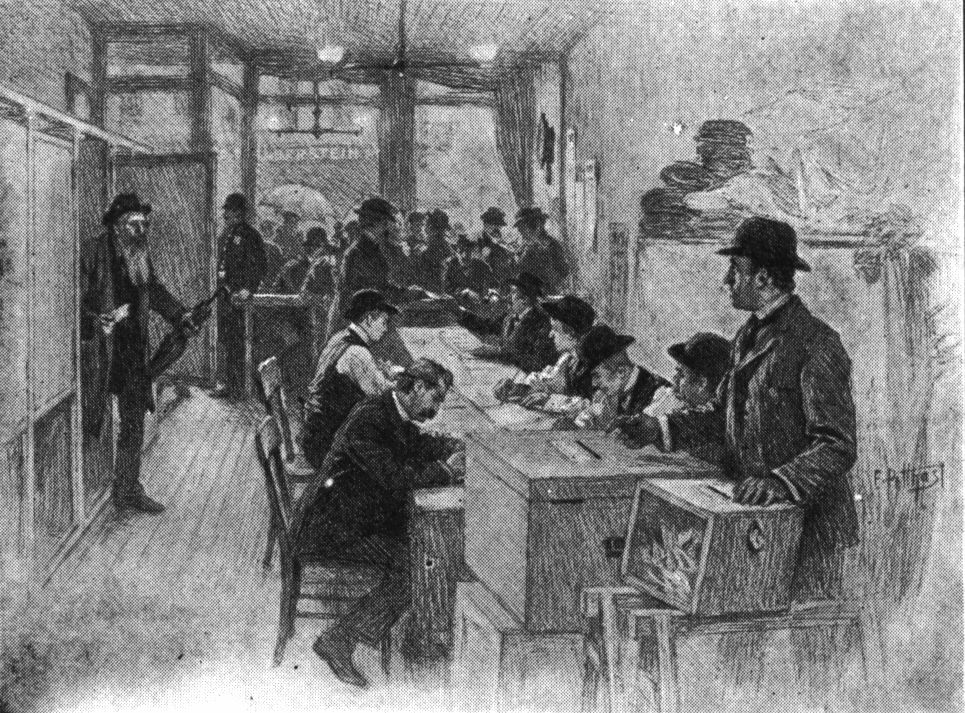Showing up to cast a vote in an election in the United States in the 18th and 19th centuries was a very different experience from the one with which we are familiar today. The occasion of casting a vote was a celebratory one, often attended by much food and drink. Voting was also a public act. In some cases, it was a matter of providing a signature under a candidate’s name, or vocally calling out one’s support for a particular candidate. Voter intimidation, often involving acts of violence, was common. Even when votes were cast on paper ballots, the standard was that a voting process was fair when “a man of ordinary courage” could make it to the voting window. The rowdy and dangerous atmosphere involved in casting a vote was offered as a weighty reason that the right to vote should be denied to women. In fact, the practice of voting was so corrupt, that one theory explaining the mysterious death of Edgar Allen Poe was that he was the victim of “cooping”—the practice of kidnapping less fortunate (often homeless) members of society, getting them drunk, and forcing them to vote repeatedly for a particular candidate. Continue reading “Should Political Apparel be Allowed in Polling Places?”

